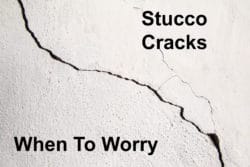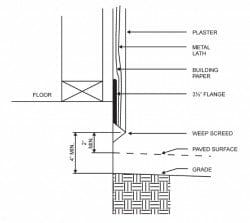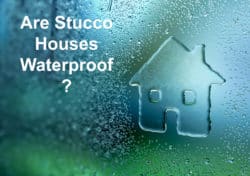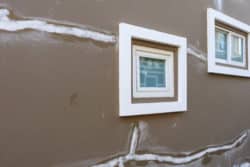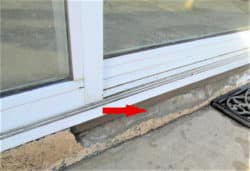Which Stucco Cracks Are Serious And A Structural Concern
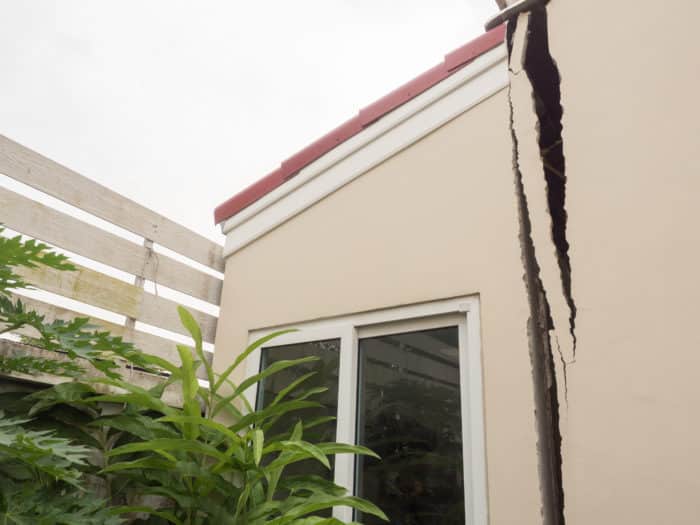
Stucco cracks are not unusual and most are not a structural problem, however, if the cracks are related to structural issues, they can be very expensive to fix and serious damage can occur to a home. Therefore, it is important to know how to tell which cracks are normal, and which are serious structural stucco cracks.
To evaluate the seriousness, you must look at the width, depth, location, angle, and the edges of the cracks.
Structural Engineers
When a structural engineer evaluates a stucco house for defects and structural problems, he always examines the stucco for cracks and other defects. He will look at the width, depth, location, angle, and the edges of any cracks, as well as for stains, efflorescence, and blistering.
Additionally, he will check the foundation for cracks and other issues, the floors for levelness and if there are drywall cracks, for any of these may be a “red or yellow flag” that there are structural problems. Doing this helps alert an engineer or homeowner that there may be structural issues that are causing or contributing to the existing stucco cracks.

Questions
Two of the most basic questions that need to be answered when evaluating how serious stucco cracks are and what needs to be done, revolves around the answer to the following two questions.
#1 Are structural problems causing the cracks?
Stucco cracks may be caused by damaged or improper framing, soil movement like slope creep, expansive soils, earthquakes or settling. Strong winds from tornadoes. cyclones and hurricanes also can damage a structure and cause cracking. Basically, issues with the structure itself causes the stucco to crack.
#2 Are the cracks causing a structural problem?
The other side of the coin is that the cracks in the stucco are causing damage to the structure. A good example of this would be when water seeps through the cracks in the stucco; water from snow and ice melting, rains or even a sprinkler system spraying on a stucco wall every day; and over time, this water then causes wood rot. This then leads to deteriorated or damaged beams and framing members. Perhaps the substrate supporting the stucco fails or there was a lack of maintenance on the homes’ stucco. These types of issues can result in a structural weakness or even a structural failure.
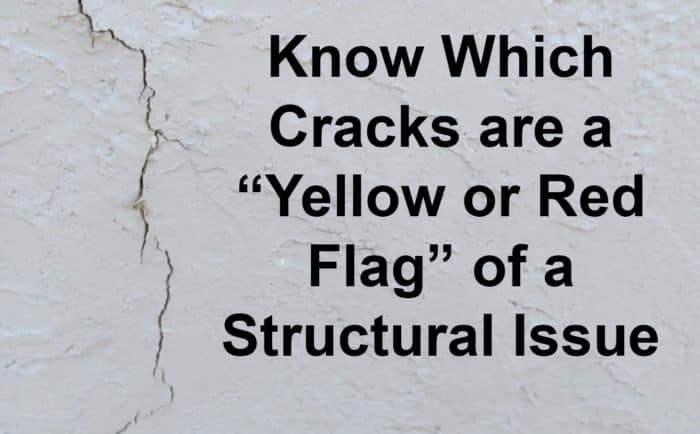
One reason the “Answer” is important.
The answer is important because you must know what order to repair things in. Do you repair the cracks first or the cause of the cracks?
If you just seal or patch the cracks that are caused by structural problems and you don’t correct the structural problem or root cause of the cracks, they will just reappear again later if you haven’t corrected the root cause of the cracking.
What Structural Engineers Look For
An engineer will not just examine one crack, but he will examine the majority of the cracks in a wall. Additionally, he will also examine other components of the home, such as the foundation, slab, drywall, roof line, floors, etc. in order to put together a whole picture. A little like putting all the pieces of a puzzle together so that he can get an overall picture of the home. He will be looking at many of the following items, just as you, a homeowner should do.
#1 “V” Shaped cracks
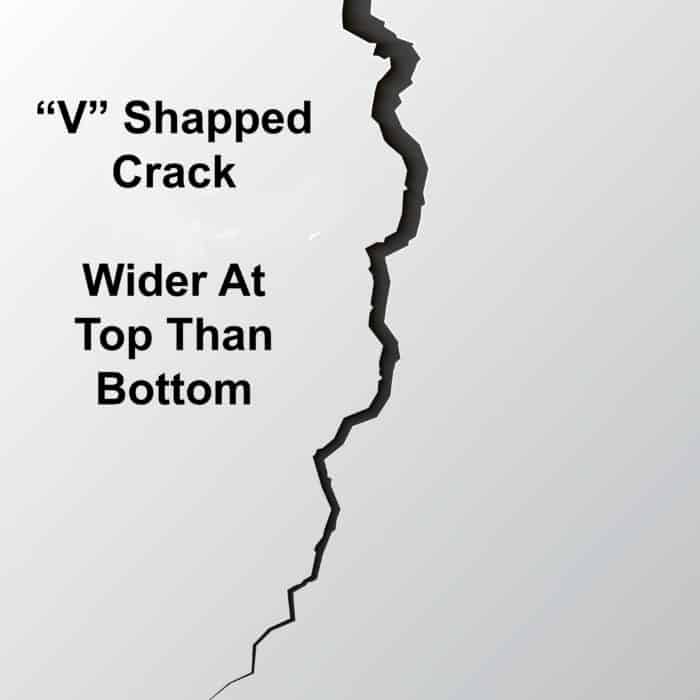
If a stucco crack is small at the bottom area and grows continuously larger as it moves up a wall, then this can be an indication that the homes’ foundation or slab has probably had some form of movement and possibly the foundation and or the slab, if one has cracked. Usually where one area has dropped down or settled. There are 3 basic types of settlement, and the most destructive type of settlement is usually “Differential settlement.”
Depending on the width, length and location of the crack, it can be a “Red Flag” indicating a structural issue. If the crack is ¼ of an inch or larger at the top, then consideration should be given to consulting a structural engineer, especially if there other warning signs of a problem.
#2 Edges of crack do not match-up
If the edges of a crack do not match or fit like a puzzle piece, it’s a concern. When looking at the crack, if one side has shifted up or down and the other side no longer matches up if you pushed the two sides back together, then one side has moved and this generally requires a lot of force for this to happen. These cracks tend to be long, not short and will have enough force to cause structural damage. The framing has probably shifted and even the slab or foundation may have moved as well. An 1/8 of an inch shift under these conditions would be a concern. If the crack has only shifted 1/32 or 1/16 of an inch, then it would generally not be a major concern, unless there were other warning signs.
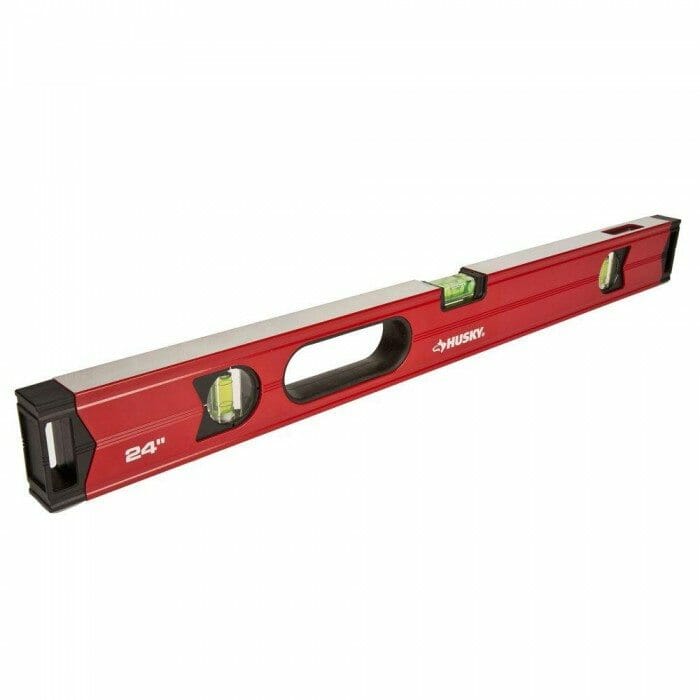
#3 One side of crack not in the same plane as the other side
If you laid a level or straight edge across the crack and on one side you could slide a nickel or quarter under the level, then there may be cause for concern. This condition may occur where a wall has a bulge in it or if this condition is in the lower section of the wall, and the foundation has rotated, in rare occasions this may occur.
#4 Cracks 1/8 of an inch or larger
Engineers, contractors, and inspectors will often say that if a crack is 1/8 inch or more wide, there may be a structural concern or serious problem. It is just a rough rule of thumb that many use, but in reality, it is only that, a rough rule of thumb.
What really matters is what caused the crack or cracks, are there structural issues with the house that is causing the cracks and how serious are those issues.
The other concern, is the crack allowing water to get into the wall and is that water causing damage to the framing or other components of the house or is there mold and mildew developing. The bottom line, it is not a magic number, but a guideline that there may be a problem and that there are a number of things that need to be examined so that you get the whole picture.
#5 Depth of crack
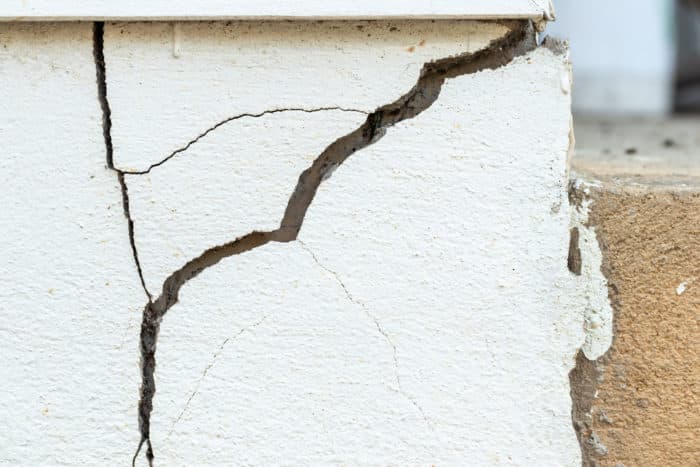
Cracks that are only the depth of the finish coat, sometimes called the top coat, are not nearly as serious as a crack that runs all the way through the stucco (i.e, through the scratch, coat, the brown coat and the finish coat) in a Traditional hard coat stucco application.
Note that in a Traditional hard coat stucco, most hairline cracks only penetrate the finish coat, and not through the scratch coat or brown coat, thus they do not usually leak.
In an EFIS synthetic stucco system, a crack in the outside layer, the finish coat / Lamina, is generally considered much more of a concern, because the outside layer is basically the only protection from moisture intrusion in older EFIS systems. In EFIS systems installed after 1995 they have made improvements to reduce moisture intrusion issues. When a crack penetrates through all layers of a stucco wall, there is a higher probability that water will get into the wall cavity, or damage the framing, and even reach the interior finish materials, such as the drywall; plus, mold and mildew may develop.
#6 Cracks at door and window and corners
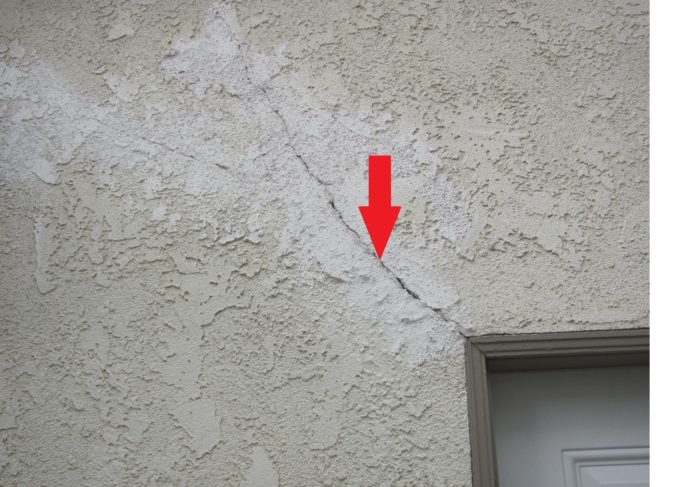
One of the most common areas for stucco to crack is at door and window corners. Most are not serious, and contractors generally consider most to be normal and more of a maintenance issue than anything else. There are a few though that may be a warning sign of a more serious issues, such as a moisture intrusion concern or a structural issue.
If the cracks are an 1/8 inch or larger, or if they extend out from the window or door corner over 5 feet, plus or minus; then the concern may rise. You may want to step into the house and see if there are cracks at the same door or window corners, and if so, the level of concern should be higher.
#7 Doors or windows “Racked” or larger than usual gap
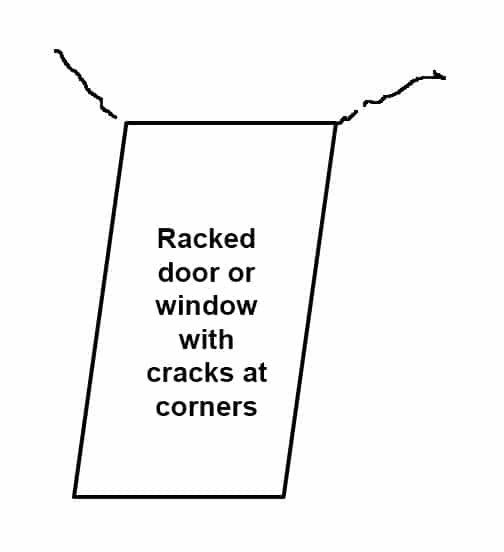
When there are cracks at a door or window corner and the window or door is racked, similar to a parallelogram shape, corners not at a true 90-degree right angle; then more concern is well warranted. Generally racking does not occur unless there is a very serious structural issue. Several of the most common causes are an earthquake, landslide, avalanche, or a considerable amount of slope creep over a long period of time.
The more racking there is and the larger the cracks, the greater the concern. Should there be gaps, especially ones that are not fully sealed, there may be both a structural and moisture intrusion concern. Racking would normally be a “Red Flag.”
#8 Medium to large cracks appearing on new homes within 6 to 12 months
It is very common for new homes to have stucco cracks.
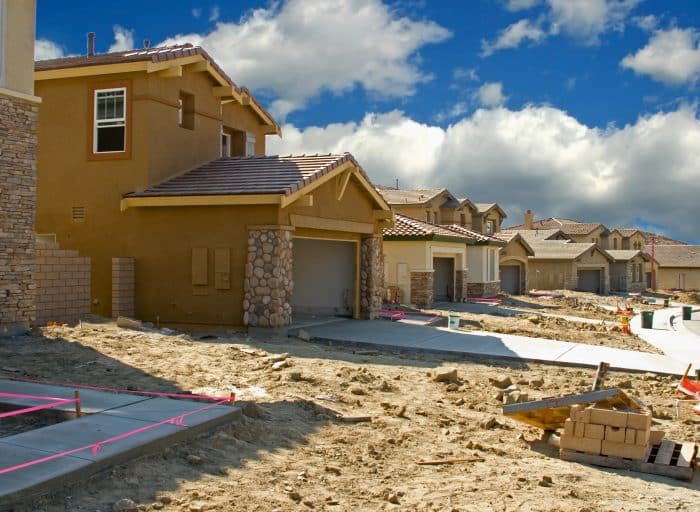
Most new homes will generally settle a little in the first year or two. They will settle ¼ of an inch or even ¾ of an inch in the first couple of years. This settling movement often causes a few cracks to appear, mostly hairline types of cracks; they are small and not a structural concern. Another common cause for cracks in a new home, especially in the first few weeks or months, is that the stucco will shrink a little during its curing or hardening process when the moisture is leaving the stucco. These cracks are generally very small, usually called shrinkage cracks and are not structural in nature.
What is uncommon, would be for larger types of cracks to appear. If just one or two cracks appear that are between 1/32 to 1/16 of an inch, it generally would not be of much concern, even a 1/8 of an inch may not be serious, depending on where it is and how long. Owners would be wise to contact the builder, especially before the first-year warranty period has run out, and ask about having the cracks repaired. Remember to take photos and document all communications, including the dates.
#9 Diagonal cracks

Diagonal cracks are often associated with structural issues involving framing defects and with structural movement caused by soil and foundation issues. If the foundation at the corner of a house shifts or drops, it would not be unusual to have a diagonal crack. Houses that have settlement, especially differential settlement, may also have diagonal cracking and the cracks tend to be smaller at the bottom of the crack than at the top of the crack.
When evaluating diagonal cracks, especially ones 1/8 of an inch or larger and over 3 or 4 foot long, be sure to look for cracks in the foundation and for floors that are out of level or sloped. (Easy ways to check a floor for levelness)
Long diagonal cracks generally require significant stress or movement to cause a midsize or large crack across a wall. Short, small diagonal cracks at door or window corners are normally not a significant structural concern, but more of a maintenance issue.
#10 An abundance of cracking

All other things being equal, the more cracks and the bigger the cracks that a wall has, the more serious the cracking is. However, when there are a tremendous number of cracks in many locations and running in many directions, they may not be caused by a structural issue. The cause may relate to the stucco mix and the quality of materials used. There is also a high probability that the quality of the workmanship and curing time played a part in the problem.
They should be considered a structural issue, because they may allow an unusually large amount of moisture to penetrate the wall, which may result in wood rot and framing failures.
#11 Foundation issues and stucco cracks
There are a number of different types of foundations used in the U.S. The type of foundation that a home sits on will vary based on a number of factors, including:
- Type of soil
- Climate zone where the home is located
- Design of the house and the loads the foundation will be carrying
- The structural engineer’s choice of foundation and cost considerations
The three most common types of foundations in the U.S. are:
- Basement foundations
- Slab on Grade / Slab on grade with turned down edge
- Raised Foundation
Learn more about different types of foundations.
Note that the terminology used to describe various types of foundations will vary considerably across the country and may be confusing to homeowners at times.
Regardless of which of the three main types of foundations that a home has, soil movement, whether caused by settling, slope creep, seismic activity, or expansive soils can be extremely detrimental to the structural integrity of a home and cause stucco cracks. There are several “Red Flags” that a stucco crack could be very serious and relates to foundational issues.
- Both the stucco and the foundation are cracked and that the crack in each appears to line up with the other, as if it continues from the stucco right on down into the foundation, basement, or slab.
- If the foundation is leaning, not level or bowed and there are cracks in the stucco wall above the foundation, then it normally is a “Yellow or Red Flag.”
- Bulging stucco walls. If a stucco wall sitting on the foundation is leaning or bulging outwardly, it is a concern, and even more so, if the bulging wall has cracks in it. There may be a framing issue, a foundation issue, or both.
Homeowner Tip
Keep water away from the foundation and do not let it stand or puddle near the foundation, preferably not within 10 feet. Two of the best ways of accomplishing this is to keep the gutters and down spouts clean and in good repair. Down spouts should always direct the water away from the foundation. Have the soil near the foundation slope away from the foundation. Most codes recommend the soil slope, dropping 6 inches in 10 feet, ensuring that most of the water drains to a point or area that is at least 10 feet away from the foundation.
Most homes had the proper slope and drainage when they were first built; 95% or more. However, over time many added or changed the landscaping around the home and when they did, they changed how the water drained, usually without realizing it or knowing the importance of drainage next to the foundation.
#12 Moisture Problems and Stains on stucco walls
Moisture in a wall can cause structural damage
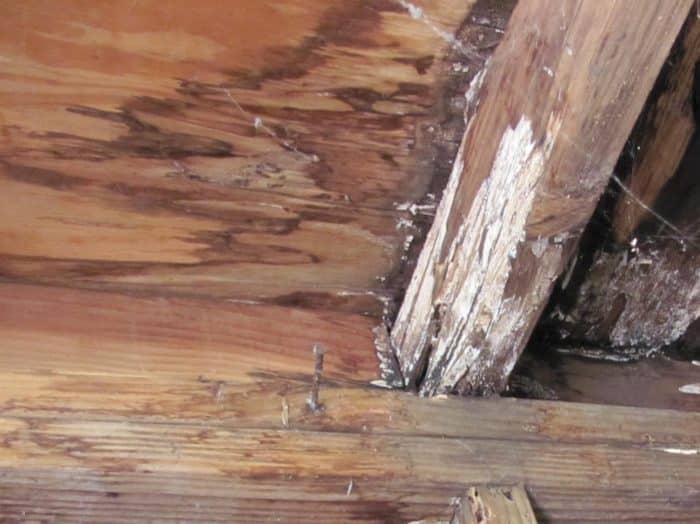
Water over time, on or in a wall, can be very destructive. It may cause framing hardware, nails, metal lath and fasteners to rust, losing much of their holding power and strength.
Moisture can also cause wood rot to beams, studs, headers, plywood and OSB substrates and shear panels, as well as damage to other framing members. When this happens, the building can lose much of its structural strength and stucco cracking will occur. Stucco lathing is often fastened to a plywood or OSB substrate, and if this substrate or the fasters fail due to moisture, entire areas of stucco may fall off and even occasionally injure someone. Therefore, it is important to look for evidence of moisture issues.
Flaking, blistering, spalling, bubbling and deterioration
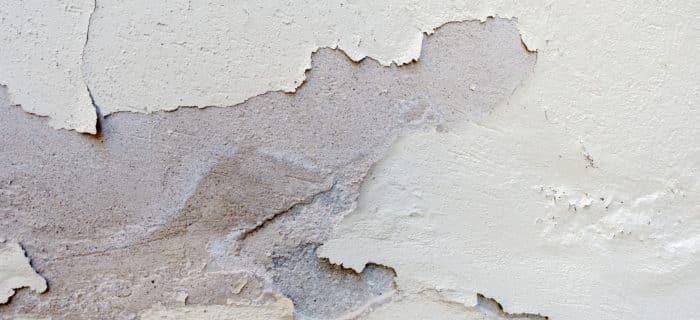
Watch for areas where the top or finish coat of the stucco is deteriorating, flaking or has other damage, for it may be an indication of moisture issues. Where there are water problems, there may well be structural issues. At times there may be a coat of paint over the stucco, and moisture in the stucco or behind the stucco is causing the paint to bubble or peel off. If the stucco is painted and depending on the type of paint, the paint itself may be a problem.
Stucco is a porous material and when moisture seeps into it from rain and other sources, it will then dry out, basically it works its way back to the exterior surface and evaporates from warmer days and wind; contractors often refer to this process as the stucco “breathing.” Should the stucco be covered by an elastomeric type of paint, then the moisture that has gotten behind the stucco through cracks or unsealed penetrations is not able to escape, it is trapped. If this happens, then mold or wood rot may develop.
Rust stains by cracks
Rusted nails, metal fasteners for the lath or the lath itself may cause rust stains by cracks. Should water be getting to any wood framing hardware, then over time it may also rust. When the rust stains are visible, chances are that there has been a moisture issue for a long time, for metal doesn’t rust overnight. It takes many months and often a number of years before it becomes evident.
One should be concerned that if rust stains are visible, that there is a high probability that there is moisture damage and possibly wood rot on the interior of the wall. Further investigation into the stains, the cause, and if there is structural damage in the wall would be wise.
Wall is damp or wet in areas, while the rest of the wall appears dry
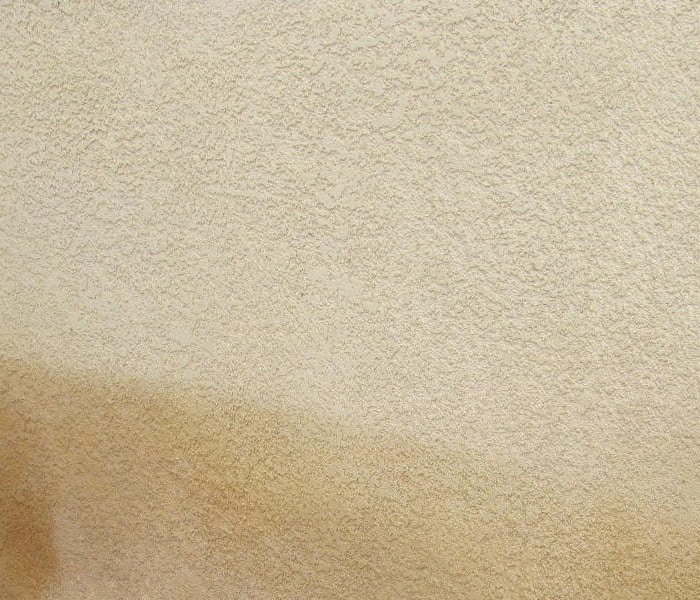
A wall that has moisture evidence, in example, one area stays wet longer and doesn’t dry as quickly as other areas, may be trapping water in the wall. Over time wood rot and mold may develop.
If there is a considerable amount of moisture, it may penetrate through the wall cavity and stains may appear on the interior wall, often on the drywall or baseboard. This would be a serious condition and there is a fair probability that there may be some structural damage. In these situations, the stucco will more likely be damp on the lower areas of the wall.
Efflorescence
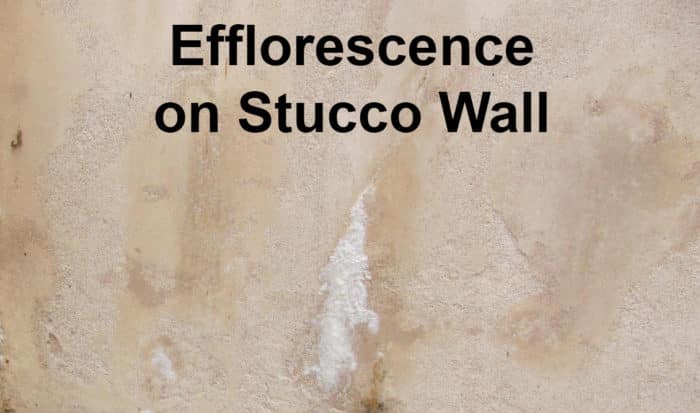
Efflorescence, is a white looking substance, consisting of crystalline deposits of soluble salts, that migrates through a stucco wall, from the inside to the outside as a wall is drying out. The water may have seeped into the stucco wall from a rain and occasionally it may have come from some other source like a plumbing or roof leak.
As the water migrates to the exterior of the wall, it evaporates, leaving a white powdery substance on the wall called “efflorescence.” The speed of this evaporation or drying process depends on the temperature, humidity and wind.
Efflorescence is not uncommon and does not always mean that there is a serious problem, but at times, depending on many other factors, it may be considered a “Yellow Flag.”

- Do an annual inspection and evaluation of your stucco. Check for cracking, damage, and moisture issues. Catch them early.
- Keep water away from your foundation and gutters clean.
- Repair any cracked or damaged areas.
- Seal or caulk any areas around windows, doors, pipes or other penetrations going through the stucco.
- Adjust your yard and planter sprinklers, so that water does not spray your stucco walls.
Seek professional help if you’re not for sure how serious something is or you’re not for sure how to repair it.

Stucco is an excellent cladding for most homes. It is cost effective, easy to maintain and very durable. Architects use stucco to achieve various architectural styles, Modern, South Western, Ancient Greek, Italian Villa, as well as many others. It is very popular and over 25% of the homes in America have stucco on the exterior. However, stucco does crack, it’s very common, but fortunately most are not serious or structural in nature.
Three of the biggest problems with stucco walls
Moisture intrusion, soil and foundation movement, and failure to maintain the stucco, is what causes most stucco related structural problems. Since most serious and big cracks start out small, catching problems early can save considerable money, for structural related issues can be costly to fix and cause considerable problems.
Structural Engineers
At times, there may be a few stucco problems that relate to structural issues which are complex, and you may need professional advice. Should this be the case, a qualified structural engineer would be a good person to consult with.

